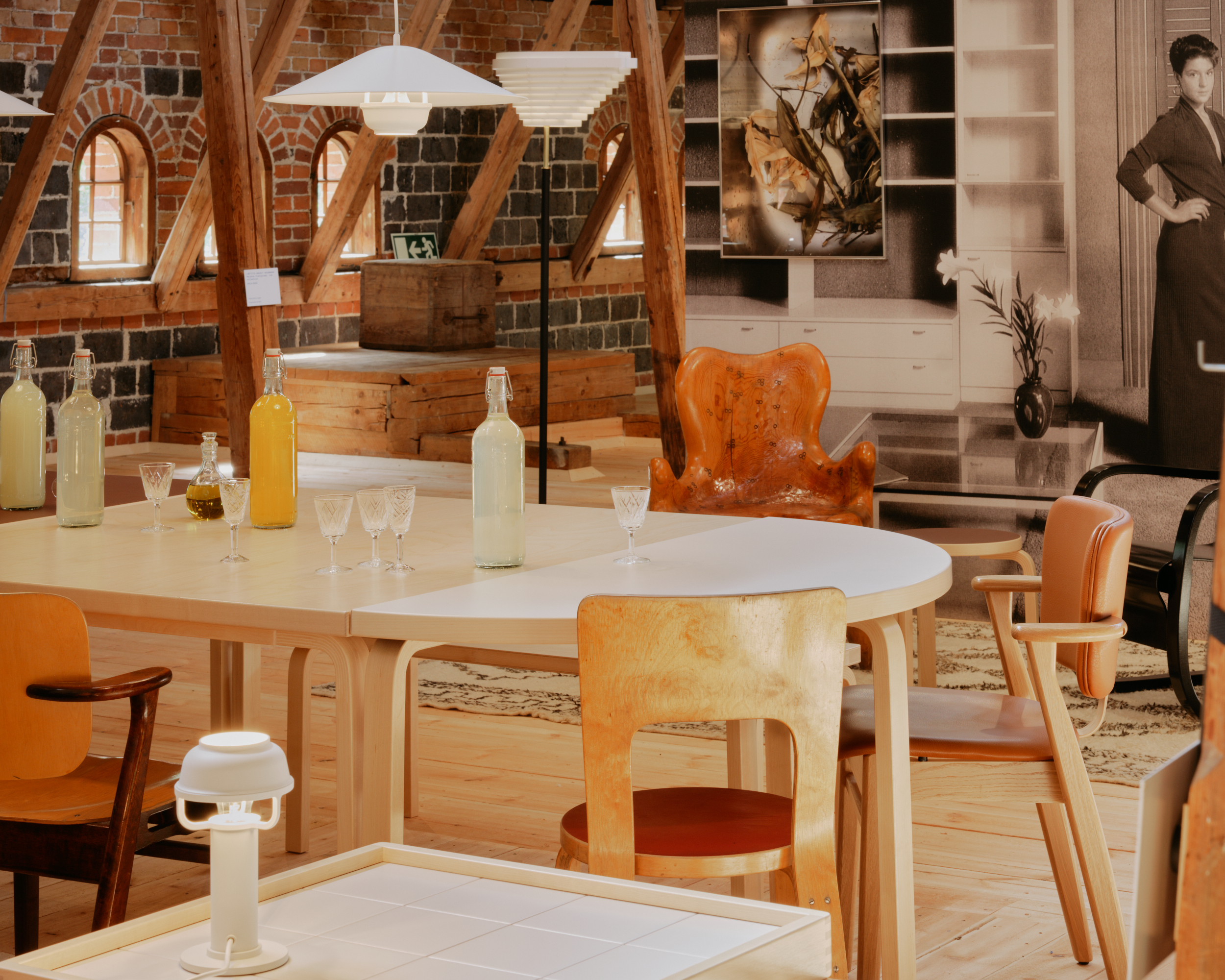
The Fiskars Village Art & Design Biennale has many reasons to celebrate!
Preparing for its third edition, the Fiskars Village Art & Design Biennale (16 June – 1 September) has firmly established its place in the cultural calendar of the summer. The programme features two impressive main exhibitions and a diverse array of parallel events spread across the Raasepori region.
The exhibition Fragile celebrates the 30th anniversary of the Artists’ Cooperative Onoma, highlighting local creative talents who have formed a strong and resilient community over the years. The exhibition Surprise Guest by Luovi Productions tests the boundaries of art and design. The historic Granary transforms into a summer villa-like space, where the dialogue resulting from encounters blurs the lines between decoration and functionality. This summer is especially significant as the main partner, Fiskars Group, celebrates its 375th anniversary since establishing the ironworks by the Fiskars River.
“Fiskars Group has been part of the everyday life and celebrations of the ironworks village since it was founded by the Fiskars River in 1649. The ironworks remains a hugely important place for us and a source of inspiration. We are delighted and proud that the biennale brings visitors to the birthplace of our brand. We hope the biennale will offer summertime visitors unexpected encounters, new perspectives, joy, and inspiration for their everyday life,” says Noora Hostikka, responsible for global communications for the Fiskars brand.
The Surprise Guest exhibition tests the boundaries of visual arts and design – while challenging the usual summer fantasies
The historic Granary at the heart of the ironworks village transforms into interpretations of old-time summer villa culture. Collaborations between contemporary artists and design brands take over the villa’s top floor in the Surprise Guest exhibition, curated by Sini Rinne-Kanto. The exhibition’s themes and architecture draw from the era when city-dwellers and their families would pack up their belongings and move to the countryside for the summer. Surprise guests were a frequent sight over the summer months, whether invited visitors or unannounced arrivals. The Surprise Guest exhibition explores home and domesticity through the lenses of art and design, as well as indicators of identity, social relationships, hospitality, and welcoming strangers.
Design brands and contemporary artists, paired in rooms designed by exhibition architect Lauri Johansson, engage in their own dialogue. While the surprise guests have established practices abroad – most of whom have never exhibited in Finland before – the invited design brands are local, representing the aesthetics, forms, and materials of Nordic design. On the veranda, we are welcomed by Lapuan Kankurit and Parolan Rottinki, accompanied by artist Laura Gozlan. In the lobby, we meet Vaarnii with Yeṣim Akdeniz. The kitchen is naturally hosted by Fiskars, with Marc Camille Chaimowicz’s works taking pride of place. The library is by Studio Kukkapuro and Michel Auder, and the living room is the work of Nikari, Secto Design, and Woodnotes with Leonor Antunes. Everyone is invited to the dinner table with Artek and Laëtitia Badaut Haussman. The bedroom is designed by Johanna Gullichsen and Villa ja Peite, with Keren Cytter and Kim Farkas as the surprise guests. The bathroom by Durat and BLESS is a striking explosion of colours.

In the dialogue resulting from the encounters, the boundaries between art and design, decoration and functionality blend together. The rooms examine the limits of furniture, sculpture, installation, craft, moving image, and sound. The Surprise Guest exhibition is not the usual heroic and soothing summer fantasy; instead, it evokes a more complex storyline. What is public or private becomes unclear. Doors do not exist, and the interface between the interiors and outside dissolves. The exhibition questions binaries of many kinds: what is personal or political, uncanny or mundane? What do we show or hide? How do strangers turn into companions?

The Fragile exhibition features over 60 artists and designers
The other main exhibition of the biennale is Fragile, curated by art historian Marja Sakari, marking the 30th anniversary of the local Artists’ Cooperative Onoma. The theme provokes reflections on the fragility of world politics, nature, and life in general. The village community of artists and artisans in Fiskars can be seen as a fragile structure, loosely formed around creative activity. At the same time, the community has proven to be immensely resilient and strong. The exhibition places emphasis on locality, featuring local artists and guests from international artist residencies over the years. The history of Fiskars, its nature, the tradition of crafts, affordable workspaces, and a peaceful, inspiring environment have attracted and continue to attract diverse artists. Many have come and gone, yet art and creativity remain. The exhibition Fragile honours this perseverance. It also includes works from five deceased artists who lived in Fiskars: Martti Aiha, Markku Kosonen, Jukka Mäkelä, Stig Nordman, and Howard Smith. The exhibition pays tribute to different ways of working and preserving tradition, evident in the efforts of those who find themselves in Fiskars.

“Many of the works in the exhibition examine disappearing heritage, both in terms of craft traditions and disappearing folklore. In Fiskars, this fragile and vanishing heritage has been learned to be cherished and is also a source of inspiration,” curator Marja Sakari explains.
In addition to the main exhibitions, the biennale features an extensive parallel programme, assembled through an open call aimed specifically at local creatives in the surrounding Raasepori region. The programme includes a ceramics workshop at Billnäs Gård, open doors at Gallery Bässen’s sculpture park at Mustio Manor, and the showrooms of Nikari and Woodnotes. Communal dinners, various gallery exhibitions, and artist meetings are also to be expected.

A new addition to the biennale is the Biennale Shop, where visitors can find a carefully curated selection of beautiful and practical items. This summer’s shop selection is inspired by the Surprise Guest exhibition.
Fiskars Village Art & Design Biennale 16 June – 1 September, from 11am to 6pm every day. For the complete programme and all additional information, please visit fiskarsvillagebiennale.com.